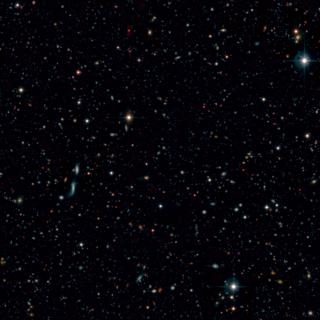Bibcode
Nadolny, Jakub; Lara-López, Maritza A.; Cerviño, Miguel; Bongiovanni, Ángel; Cepa, Jordi; de Diego, José A.; Pérez García, Ana María; Pérez Martínez, Ricardo; Sánchez-Portal, Miguel; Alfaro, Emilio; Castañeda, Héctor O.; Gallego, Jesús; González, J. Jesús; González-Serrano, J. Ignacio; Padilla Torres, Carmen P.; Pintos-Castro, Irene; Pović, Mirjana
Bibliographical reference
Astronomy and Astrophysics
Advertised on:
4
2020
Journal
Citations
10
Refereed citations
8
Description
Context. A sample of low-mass Hα emission line sources at z ∼ 0.4 was studied in the context of the mass-metallicty relation (MZR) and its possible evolution. We drew our sample from the OSIRIS Tunable Emission Line Object (OTELO) survey, which exploits the red tunable filter of OSIRIS at the Gran Telescopio Canarias to perform a blind narrow-band spectral scan in a selected field of the Extended Groth Strip. We were able to directly measure emission line fluxes and equivalent widths from the analysis of OTELO pseudo-spectra.
Aims: This study aims to explore the MZR in the very low-mass regime. Our sample reaches stellar masses (M*) as low as 106.8 M☉, where 63% of the sample have M* < 109 M☉. We also explore the relation of the star formation rate (SFR) and specific SFR with M* and gas-phase oxygen abundances, as well as the M*-size relation and the morphological classification.
Methods: The M* were estimated using synthetic rest-frame colours. Using an χ2 minimization method, we separated the contribution of [N II]λ6583 to the Hα emission lines. Using the N2 index, we separated active galactic nuclei from star-forming galaxies (SFGs) and estimated the gas metallicity. We studied the morphology of the sampled galaxies qualitatively (visually) and quantitatively (automatically) using high-resolution data from the Hubble Space Telescope-ACS. The physical size of the galaxies was derived from the morphological analysis using GALAPAGOS2/GALFIT, where we fit a single-Sérsic 2D model to each source.
Results: We find no evidence for an MZR evolution from comparing our very low-mass sample with local SFGs from the Sloan Digital Sky Survey. Furthermore, the same is true for M*-size and M*-SFR relations, as we deduce from comparison with recent literature. Morphologically, our sample is mostly (63%) populated by late-type galaxies, with 13% of early-type sources. For the first time, we identify one possible candidate outlier in the MZR at z = 0.4. The stellar-mass, metallicity, colour, morphology, and SFR of this source suggest that it is compatible with a transitional dwarf galaxy.
Aims: This study aims to explore the MZR in the very low-mass regime. Our sample reaches stellar masses (M*) as low as 106.8 M☉, where 63% of the sample have M* < 109 M☉. We also explore the relation of the star formation rate (SFR) and specific SFR with M* and gas-phase oxygen abundances, as well as the M*-size relation and the morphological classification.
Methods: The M* were estimated using synthetic rest-frame colours. Using an χ2 minimization method, we separated the contribution of [N II]λ6583 to the Hα emission lines. Using the N2 index, we separated active galactic nuclei from star-forming galaxies (SFGs) and estimated the gas metallicity. We studied the morphology of the sampled galaxies qualitatively (visually) and quantitatively (automatically) using high-resolution data from the Hubble Space Telescope-ACS. The physical size of the galaxies was derived from the morphological analysis using GALAPAGOS2/GALFIT, where we fit a single-Sérsic 2D model to each source.
Results: We find no evidence for an MZR evolution from comparing our very low-mass sample with local SFGs from the Sloan Digital Sky Survey. Furthermore, the same is true for M*-size and M*-SFR relations, as we deduce from comparison with recent literature. Morphologically, our sample is mostly (63%) populated by late-type galaxies, with 13% of early-type sources. For the first time, we identify one possible candidate outlier in the MZR at z = 0.4. The stellar-mass, metallicity, colour, morphology, and SFR of this source suggest that it is compatible with a transitional dwarf galaxy.
Related projects

Evolution of Galaxies
Galaxy evolution is a crucial topic in modern extragalactic astrophysics, linking cosmology to the Local Universe. Their study requires collecting statistically significant samples of galaxies of different luminosities at different distances. It implies the ability to observe faint objects using different techniques, and at different wavelengths
Jorge
Cepa Nogue